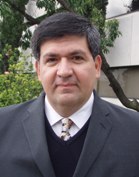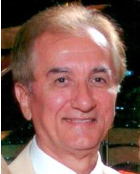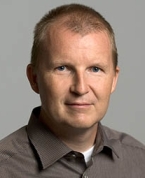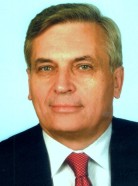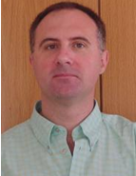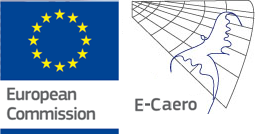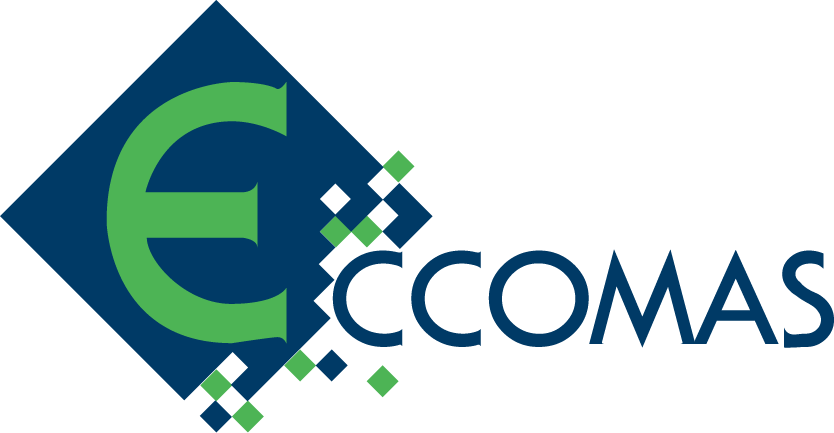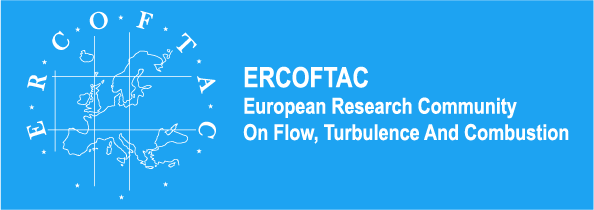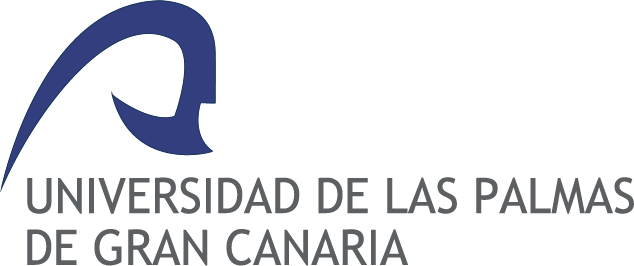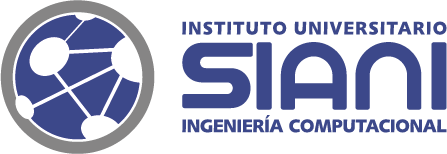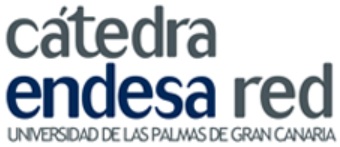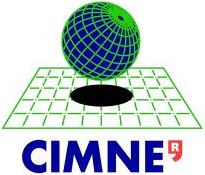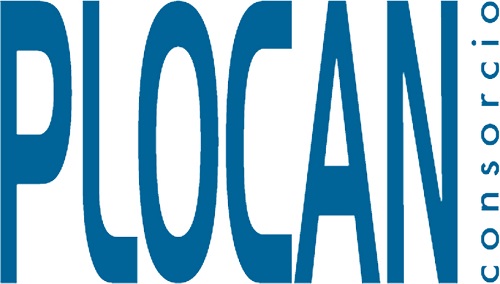Invited Speakers
Plenary Invited Speakers
Keynote Invited Speakers
Plenary Invited Speakers
Multi-Objective Evolutionary Algorithms in Real-World Applications: Some Recent Results and Current Challenges
Carlos Coello Coello
Department of Computation
CINVESTAV-IPN Mexico City, Mexico
Evolutionary algorithms (as well as a number of other metaheuristics) have become a popular choice for solving problems having two or more (often conflicting) objectives (the so-called multi-objective optimization problems). This area, known as EMOO (Evolutionary Multi-Objective Optimization) has had an important growth in the last 15 years. In this talk, we will review some of the research topics on evolutionary multi-objective optimization that are currently attracting a lot of interest and which are relevant to real-world applications (e.g., scalability, hybridization, use of surrogates, and parallelism). Some of the current challenges imposed by real-world applications will also be briefly discussed.
Bio Sketch
Carlos Artemio Coello Coello received a MSc and a PhD in Computer Science from Tulane University (USA) in 1993 and 1996, respectively. His PhD thesis was one of the first in the field now called “evolutionary multiobjective optimization”. He currently has over 350 publications which, according to Google Scholar, report over 18,000 citations (his h-index is 53).
He is currently full professor with distinction (Investigador Cinvestav 3F) and Chair of the Computer Science Department at CINVESTAV-IPN in Mexico City, Mexico.
He his the only computer scientist in Mexico who has received the “National Research Award” (in 2007) from the Mexican Academy of Science (in the area of exact sciences), since its inception, in 1961 (this is the most prestigious scientific award granted in Mexico to scientists under the age of 40). He has also received the “Medal to the Scientific Merit” from Mexico City’s congress and the “Ciudad Capital: Heberto Castillo 2011 Award” in Basic Science.
More recently, he received the “2012 Scopus Award” (Mexico’s edition) and the “2012 National Medal of Science in Physics, Mathematics and Natural Sciences” from Mexico’s presidency. This is the most important award that a scientist can receive in Mexico from his government and Dr. Coello is only the second computer scientist to receive it, since its inception in 1945.
He is also the recipient of the prestigious “2013 IEEE Kiyo Tomiyasu Award”, which is one of the IEEE Technical Field Awards. As of January, 2011, he is also an IEEE Fellow for his “contributions to multi-objective optimization and constraint-handling techniques”.
His current research interests are: evolutionary multiobjective optimization and constraint-handling techniques for evolutionary algorithms.
Hybrid Optimization Algorithms and Hybrid Response Surfaces
George S. Dulikravich
Department of Mechanical and Materials Engineering
Florida International University
Marcelo J. Colaco
Department of Mechanical Engineering, Politecnica/COPPE
Federal University of Rio de Janeiro, UFRJ
It is well known that no single optimization algorithm outperforms any other search over all possible classes of objective functions. This means that over all possible classes of objective functions, some search algorithms are unable to find a minimum in the single-objective case, or a satisfactory approximation of the Pareto front in the multi-objective case. In single-objective hybrid optimization, a cluster of standard optimization algorithms was assembled in a hybrid optimization tool where a set of heuristic rules was used to perform automatic switching among the individual optimizers in order to avoid local minima, escape from the local minima, converge on a minimum, and reduce the overall computing time. In multi-objective hybrid optimization, a cluster of standard multi-objective optimization algorithms was assembled in a hybrid optimization tool where multiple switching criteria were implemented to switch among different constituent search algorithms automatically in order to better converge to a real Pareto front and reduce the overall computing time. The software developed was extensively tested on analytical test suites.
The key to solvability of most multi-disciplinary realistic problems is the accuracy and the reliability of generating multi-dimensional response surfaces that provide time-saving low fidelity models for evaluations (interpolations) of complex objective functions. The multi-layer self-organizing algorithm of Ivakhnenko uses very simple polynomial basis functions to generate analytical approximations describing highly non-linear multi-variable functions. However, this algorithm can be significantly improved when combined with a response surface generation algorithm that utilizes radial basis functions. In such a hybrid method, the algorithm chooses locally from linear, quadratic, cubic and quartic basis polynomials, as needed, to capture complicated major trends in the function to be fitted. This is automatically followed by the radial basis function method that fits the remaining errors at the originally provided high fidelity data points. This hybrid response surface generation method will be compared to the single basis function response surface models using the same suite of analytical test problems.
Bio Sketch
Professor Dulikravich (Ph.D., Cornell’79; M.Sc., Minnesota’75; Dipl.-Ing., Belgrade’73) worked as a NRC Associate Fellow at NASA LeRC, a Visiting Scientist at DFVLR-Goettingen, Assistant Professor at University of Texas-Austin(‘82-’86), Associate Professor at the Pennsylvania State University (‘86-’99), Professor at Univ. of Texas at Arlington (’99-’03), and MME Department Chairman (’03-’09) and Professor (’03-present) at Florida International University. He has authored and co-authored over 400 technical publications in diverse fields involving computational and analytical fluid mechanics, subsonic, transonic and hypersonic aerodynamics, theoretical and computational electro-magneto-hydrodynamics, conjugate heat transfer including solidification, computational cryobiology and epidemiology, acceleration of iterative algorithms, computational grid generation, multi-disciplinary aero-thermo-structural inverse problems, design and constrained optimization in turbomachinery, fluid flow and heat transfer in networks of micro/nano passages, and multi-objective optimization of chemical compositions of alloys.
He is the founder and Editor-in-Chief of the international journal on Inverse Problems in Science and Engineering (founded in 1994) and an Associate Editor of nine additional journals. He is also the founder, chairman and editor of the sequence of International Conferences on Inverse Design Concepts and Optimization in Engineering Sciences (ICIDES) and International Symposium on Inverse Problems, Design and Optimization (IPDO).
Professor Dulikravich is a Fellow of the American Academy of Mechanics, a Fellow of the American Society of Mechanical Engineers, a Fellow of Royal Aeronautical Society, and an Associate Fellow of the American Institute of Aeronautics and Astronautics. He was a member of the Texas Institute for Computational Mechanics (TICOM) at the University of Texas at Austin and a member of the Center for Space Propulsion and the Center for Gas Turbines and Power at the Pennsylvania State University. He is the founder of the interdepartmental Multidisciplinary Analysis, Inverse Design and Optimization (MAIDO) Institute at the University of Texas at Arlington and the founder of Multidisciplinary Analysis, Inverse Design, Robust Optimization and Control (MAIDROC) Lab at Florida International University.
Topology optimization for macro- and nano-structural design
Ole Sigmund
Department of Mechanical Engineering
Technical University of Denmark
Topology optimization is a computational tool for optimal structural design. The concept was originally developed for weight-optimal design of mechanical parts for automotive and aero-space applications but has lately been extended to a range of other application areas including MEMS, antennas, fluids and nano-optics. The lecture discusses recent developments in the field of topology optimization including a critical comparison of gradient and non-gradient approaches, robust design formulations, multiphysics challenges and popular web and app interfaces. Special attention will be devoted to the design of structural color surfaces and design formulations that utilize extended geometrical flexibility provided by additive manufacturing technologies.
Bio Sketch
Ole Sigmund obtained his M.Sc., Ph.D. and Dr. Techn. degrees from the Technical University of Denmark in 1991, 1994 and 2001, respectively.
He has been a Research Assistant at the University of Essen, Germany (1991-1992) and a Post graduate fellow at Princeton Materials Institute, Princeton University (1995-1996). Currently he is a full Professor and Section Head at the Department of Mechanical, Engineering, Section for Solid Mechanics, Technical University of Denmark.
Ole Sigmund has been the PI of a number of larger nationally and internationally funded research projects and he has published more than 110 research papers in peer-reviewed international journals and co-authored the monograph “Topology Optimization - Theory, Methods and Applications”, Springer (2004) with Martin P. Bendsøe. His principal research interests are theoretical extensions and applications of topology optimization methods to the design of extremal materials, smart materials, compliant mechanisms, MicroElectroMechanical Systems, crashworthiness, fluid systems and wave-propagation problems in acoustics, elasticity, nano-optics, metamaterials and antennas.
Professor Sigmund is the elected president of the International Society of Structural and Multidisciplinary Optimization (ISSMO) since 2011.
Keynote Invited Speakers
Immune and swarm optimization of structures
Institute of Computational Mechanics and Engineering, Silesian University of Technology & Institute of Computer Science,
Cracow University of Technology
tb@polsl.pl, tburczyn@pk.edu.pl
The paper is devoted to two bio-inspired methods: artificial immune systems and particle swarm optimizer to selected shape and topology optimization problems of structures. A short descriptions of biological aspect of natural immune systems and behaviour of a swarm living creatures are described in the context of optimization procedures. The clonal selection algorithm which represents one of the main features of the artificial immune system is described and its applications to static and dynamic optimization problems of structures in macro and micro levels and identification problems are demonstrated. Standard and modified versions of swarm algorithms of optimization and their applications in topology optimization of space structures are presented. The paper contains also comparisons of immune and swarm approaches with evolutionary optimization and advantages and drawbacks of both methods are identified.
Bio Sketch
Prof. Tadeusz Burczyński, DSc, PhD, Eng. received PhD (1980) and DSc (1990) from Silesian University of Technology in Gliwice. He is full professor since 1993. In 2007 he was elected Corresponding Member of Polish Academy of Sciences (PAS). Supervised 20 defended PhDs. Since 1997 he is Head of the Institute of Computational Mechanics and Engineering, Silesian University of Technology in Gliwice and since 2008 he is also Head of the Institute of Computer Science, Cracow University of Technology. He is a member of the Committee of Informatics of PAS and Head of the Section of Computational Sciences and Bioinformatics of this Committee. Since 2011 he has been the President of Committee on Mechanics of PAS. He was President of the Polish Association for Computational Mechanics in years 1999-2009. He is a member of General Council of IACM Managing Board of ECCOMAS. He received the IACM Fellows Award and the Zienkiewicz Medal granted by PACM. He is member of the Council of the Polish National Science Centre (NCN).
His main areas of interests are Computational Science and Engineering, Computer and Information Science, Computational Intelligence, Computational Mechanics and Materials Science.
He established a scientific school in the field of the application of the boundary element method (BEM) to sensitivity analysis and optimization. He also developed original concepts of stochastic and fuzzy BEM for the analysis of systems with uncertain parameters.
He developed and applied computational intelligence systems based on biologically-inspired techniques (evolutionary algorithms, artificial immune systems, and particle swarm optimization) and fuzzy systems in optimization, identification and bioinformatics. Recently, he elaborated an intelligent methodology for optimization and indentification in multi-scale modelling.
He is author or co-author of 15 books and 125 papers published in refereed international journals. He chaired or was a member of scientific committees at several international conferences and symposia on computational mechanics, artificial and computational intelligence. He is a member of the editorial boards of several international journals.
New challenges and opportunities in reliability and risk based optimization
Sebatián Martorell
Department of Chemical and Nuclear Engineering
Universitat Politècnica de València
Safety (S) improvement of industrial installations leans on the optimal allocation of designs that use more reliable equipment and testing and maintenance activities to assure a high level of reliability, availability and maintainability (RAM) for their safety-related systems. However, this also requires assigning a certain amount of resources (C) that are usually limited. Therefore, the decision-maker in this context faces in general a multiple-objective optimization problem (MOP) based on RAMS+C criteria where the parameters of design, testing and maintenance act as decision variables. Solutions to the MOP can be obtained by solving the problem directly, or by transforming it into several single-objective problems.
A general framework for such MOP based on RAMS+C criteria was proposed in [1]. There, a number of alternatives were proposed based on the use of a combination of RAMS+S formulation and Genetic Algorithms (GAs) based optimization to solve the problem of testing and maintenance optimization based only on system unavailablity and cost criteria. The results showed the capabilities and limitations of alternatives. Based on them, challenges were identified in this field and guidelines were provided for further research. In [2], a full scope application of RAMS+S based optimization using GAs was reported. Since then, the reliability and risk based optimization of design and operation of equipment and facilities has evolved into a set of technical documents, conference contributions and technical papers published elsewhere. Many of them have already addressed to some extent the effect of both random and epistemic uncertainties within this reliability and risk informed decision making framework.
This key note discusses the importance of appropriate formulation, treatment and analysis of model and parameter uncertainties in reliability and risk informed decision-making. It faces on how treatment and analysis of uncertainties should be integrated within an approach for evaluation of reliability and risk impact of safety issues, i.e. equipment design, operational requirements, etc. The approach would consist of modeling, assessment and analysis of the safety concern, which is intended to be used within an optimization context to support the decision-making on the most effective safety requirements. Examples of application are provided to illustrate the approach for a Nuclear Power Plant.
[1] Alternatives and challenges in optimizing industrial safety using genetic algorithms Original Research Article
Reliability Engineering & System Safety, Volume 86, Issue 1, October 2004, Pages 25-38
Sebastián Martorell, Ana Sánchez, Sofı́a Carlos, Vicente Serradell
[2] RAMS+C informed decision-making with application to multi-objective optimization of technical specifications and maintenance using genetic algorithms Original Research Article
Reliability Engineering & System Safety, Volume 87, Issue 1, January 2005, Pages 65-75
S. Martorell, J.F. Villanueva, S. Carlos, Y. Nebot, A. Sánchez, J.L. Pitarch, V. Serradell
Bio Sketch
Prof. Dr. Sebastián Martorell is Full Professor of Nuclear Engineering, Director of the Radiation Service and Ex-Director of the Chemical and Nuclear Department at the Universidad Politécnica de Valencia, Spain. Dr. Martorell received his Ph.D. in Nuclear Engineering from Universidad Politecnica de Valencia in 1991. His research areas are probabilistic safety analysis, uncertainties, risk-informed decision making, and RAMS plus cost modelling and optimization using genetic algorithms. In the past 22 years that he has been with the Polytechnic University of Valencia, he has served as consultant to governmental national and international agencies, nuclear facilities and private organizations in areas related to risk and safety analysis, especially applications to safety system design and testing and maintenance optimization of nuclear power plants . In this period, Dr. Martorell has taken part as Main Researcher in 64 national and international research projects and contracts. Dr. Martorell has over 300 papers in journals and proceedings of conferences in various areas of reliability, maintainability, availability, safety and risk engineering. He is a University Polytechnic of Valencia Teacher in the area of probabilistic risk analysis and RAMS for nuclear and chemical facilities. Dr. Martorell is calendar editor and a member of the Editorial Board of Reliability Engineering and System Safety International Journal. He is also an editorial board member of the Journal of Risk and Reliability. Proceedings of Institution of Mechanical Engineers, Part O. He has been Vice-Chairman of European Safety and Reliability Association (ESRA). He has been a member of Technical Committees of the European Safety and Reliability Conferences (ESREL) for more than 15 years and Chairman of ESREL 2008. His e-mail address is smartore@iqn.upv.es.
Variable Neighborhood Search; some successful industrial applications

José A. Moreno
Department of Statistics, Operational Research and Computation
University of La Laguna
Variable Neighborhood Search (VNS) is a simple and effective metaheuristic for solving combinatorial and global optimization problems. It is based upon systematic changes of neighbourhoods both in descent phase, to find a local minimum, and in perturbation phase, to escaping from their valleys. VNS haven successfully applied to many industrial problems. We survey some of the most relevant success of the VNS in these applications.
Bio Sketch
José Andrés Moreno Pérez, is full professor of the University of La Laguna (Tenerife, Spain) in the field of Computer Science and Artificial Intelligence. He got the master degree and Ph.D. degree in Mathematics at the University Complutense of Madrid. He has published about 100 scientific papers or chapter of books most of them in the area of heuristic optimization. He is editor of the journals “Memetic Computing” and the “Int. J. of Information and Decision Sciences” and has been referee of the most relevant journal in the field of Optimization. He is co-author of the most recent reviews of the Variable Neighbourhood Search (VNS) metaheuristics with the creators on the method.
Design Optimization of the Primary Pump of a Nuclear Reactor
Tom Verstraete
Von Karman Institute for Fluid Dynamics
The increasing safety demands and the reduced nuclear waste imposed on nuclear reactors have driven the research in this field towards what is generally known as fourth generation reactors. Within this class of nuclear reactors, the lead-cooled fast reactor is an attractive passively safe concept.
This presentation will demonstrate the effective use of metamodel enhanced evolutionary algorithms for the design of the primary lead pump of this type of nuclear reactor. The use of the corrosive lead-bismuth-eutectic as coolant imposes several limitations to the pump design, which leads to a very challenging design task. This pump has been designed by means of a metamodel enhanced evolutionary algorithm which allows reducing the human intervention in the design process while improving the design significantly. A two level design approach has been used, in which in the first preliminary design phase a simplified flow model is used, while in the second detailed design phase an accurate 3D CFD model is used. The results show that for this very challenging design task an innovative solution can be found in a reduced human design effort.
Bio Sketch
Tom Verstraete obtained his PhD in 2008 from the University of Ghent in collaboration with the von Karman Institute for Fluid Dynamics (VKI). Since then he is an assistant professor at the VKI. His main research topics are multidisciplinary design optimization of turbomachinery components, micro gasturbines, internal cooling channel optimization, and conjugate heat transfer.

